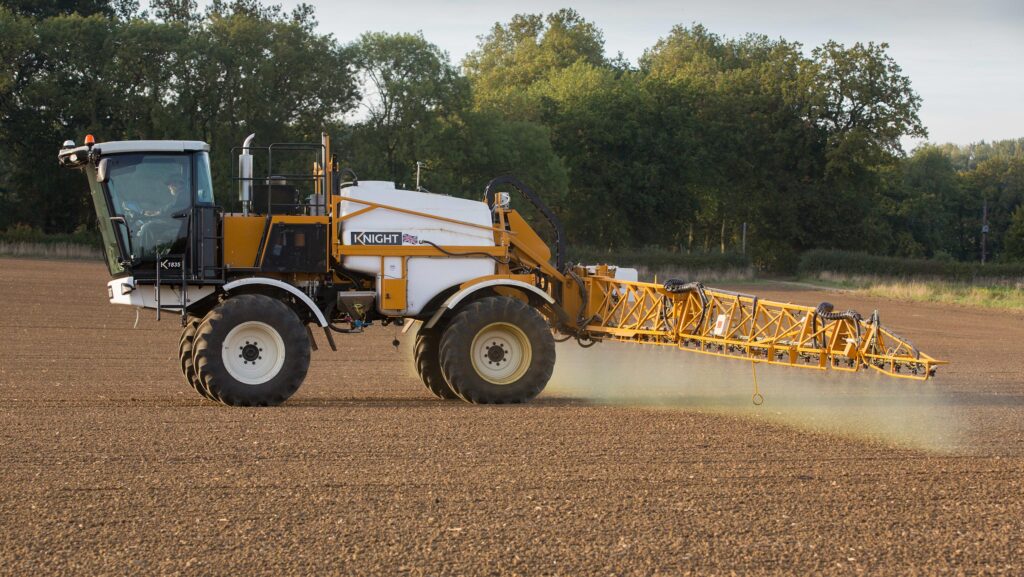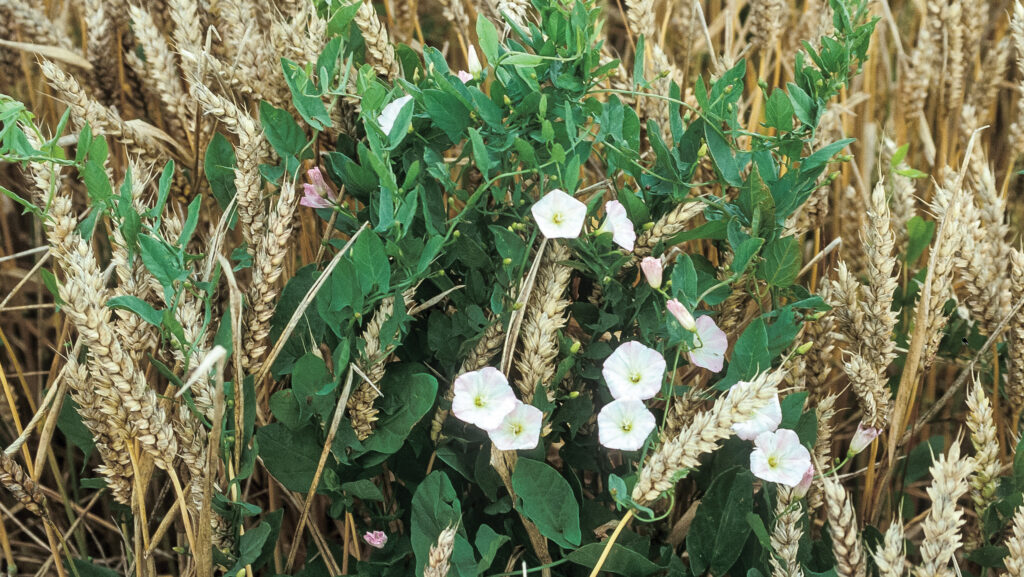How new herbicide will benefit growers in autumn 2025
 © Tim Scrivener
© Tim Scrivener A new co-formulated pre-emergence herbicide based on two new active ingredients is expected to be available in time for autumn 2025 cereal drillings, reports manufacturer FMC.
With one of the components, Isoflex (bixlozone), also bringing a much-needed new mode of action to the UK market, the product will be targeted at the primary early control timing for grass and broad-leaved weeds of winter cereals.
See also: Farm trial reveals best blackgrass strategy with new herbicide
The new herbicide launch is seen as a significant introduction, offering further choice in pre-emergence chemistry at a time when it is needed to help combat resistance, and with existing chemistry coming under threat.
Isoflex
Isoflex active is the trade name of bixlozone, a new active ingredient from the isoxazolidine family. It works by preventing susceptible weeds from producing carotenoids.
The UK will be the first country in Europe to get the new material.
Products based on Isoflex already exist in other parts of the world, including South America, Asia and Australia.
Bixlozone
Bixlozone is classified by the Herbicide Resistance Action Committee (HRAC) as a Group 13 herbicide.
It is set to be the second brand new mode-of-action herbicide to become available to growers since 2022, helping growers with the ongoing challenge of herbicide resistance management.
It follows BASF’s blackgrass herbicide Luximo (cinmethylin) which became available in autumn 2022.
From a class of chemistry known as cineoles, cinmethylin is classified as a Group 30 herbicide.
Pink colouring
Described by FMC as a very visual product when it is working well, affected weed species show a distinctive pink colouring in the field when it is taken up by the roots.
It will be approved for pre- and peri-emergence use in winter wheat, but just pre-emergence in winter barley.
The co-formulation of the Isoflex active with beflubutamid means that it delivers control and suppression of a very broad range of weeds.
That includes activity on 21 broad-leaved weeds and four grassweeds, claims the company.
The company says it provides strong control of many broad-leaved weed species and useful action on grassweeds – helping robust strategies to achieve the all-important 95%-plus control.
As a result, the new product will fit into integrated weed control programmes based on mixes and sequences with other herbicides, rather than be used as a standalone product.
Integrated control
“It’s certainly not a silver bullet or a one-can wonder,” says Gareth Jones, technical lead at FMC.
“We see it becoming part of the solution with an alternative mode of action, giving good field performance and boosting levels of control where it is in a programme.”
While both the active ingredients have received registration and are new to the market, the co-formulated herbicide product containing 200g/litre of bixlozone and 125g/litre of beflubutamid is still going through the approval process.
“We’re as confident as we can be that everything is on track for next year, and we’re excited about its potential,” confirms his colleague Geoffrey Bastard, commercial technical manager at FMC.
He predicts that weed control strategies will evolve in the coming years, as they reflect changes in farming systems, issues with herbicide resistance, and active ingredient withdrawals and restrictions.
“We’ve already seen some of the older actives disappear at a much faster rate than new ones have arrived. We also know that a big area is currently treated with flufenacet, which is under threat.”
New mode of action
Geoffrey adds that resistant grassweeds tend to dominate weed control discussions, but as most fields carry a varied weed burden, it is important to recognise that herbicides are applied to other species that can have sensitivity shifts.
“Broad-leaved weeds also demonstrate resistance mechanisms,” he says.
“So while we are all aware of the threat posed by resistant blackgrass and ryegrass and the need for 95-97% control of these species, we must be vigilant on other weed species.
“For these reasons, having a new mode of action and two new active ingredients is a significant step.”
Ongoing trials
Gareth points to the company’s trials work, which has shown an average of 53% control of blackgrass, 64% control of ryegrass, and 90% control of broad-leaved weeds when used alone.
“When you put the Isoflex active co-formulation in a programme, those figures shoot up to 95%+ control of both blackgrass and ryegrass.
“So it’s really adding something extra and brings additional choice.”
Plenty of farm trials are being conducted this year, he reveals, so that it can be seen working in a farm situation and under local conditions.
Effect of farming systems change on weeds

© Blackthorn Arable
Diversified rotations – as found in regenerative farming systems – are driving a greater diversity of weed species and prompting a rethink on their control, says John Cussans of Adas.
A whole range of weeds not usually seen in winter-based cropping systems are being observed where spring and cover crops proliferate, he reports.
A rise in perennial and small-seeded species is occurring with a reduction in cultivation intensity.
“We’re beginning to see a greater diversity of weeds being driven by reduced cultivations and the selection of different species.
“Some of these, such as hemlock and field bindweed, can invade no-till systems quite readily, so they build up rapidly.”
Farmers will need to combat this greater species diversity with their own diversity of control methods, he suggests.
“Think about the challenge that you have – consider using more cultural control methods and look at the progress that’s been made with in-crop non-chemical weed control tools,” he says.
The loss of active ingredients to resistance and regulation is crossing over into pre-emergence chemistry, he points out. This makes having new active ingredients such as Isoflex very useful.
“When it comes to chemistry, regulation has continued, but innovation has slowed.
“By focusing on diversifying our weed control approaches and being more flexible, we will be better equipped for the changing landscape.”
